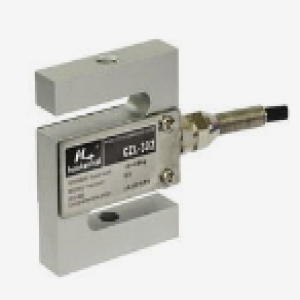
Tension and pressure sensor is a kind of equipment used to measure tension and pressure, which can be widely used in various industrial and experimental fields, such as material testing, bridge construction, machinery manufacturing, etc. It can accurately measure the force by converting the force exerted by an object into an electrical signal. The installation, use and wiring method are critical to ensure the accuracy and stability of the sensor.
Principle of tension pressure sensor
Tension and pressure sensors are usually based on strain gauge technology. Strain gauge is a kind of resistance element, and its resistance value will change with the change of material shape. When AD7572BQ05 When the sensor is under tension or pressure, the strain gauge will deform, resulting in the change of its resistance value. This change is converted into a voltage signal through a circuit, then amplified and processed, and finally converted into a readable force value.
Installation and use
1. Select the installation position: select the appropriate installation position according to the measurement demand to ensure that the sensor can correctly sense the force to be measured.
2. Fix the sensor: fix the sensor at the preset position with screws or clamps. Ensure the installation is stable and avoid affecting the measurement accuracy due to vibration or movement.
3. Calibration: Before starting the measurement, calibrate the sensor to ensure the accuracy of the measurement results. The calibration process usually involves applying a known weight or force to the sensor and adjusting the output until the output matches the known force.
4. Protection: when used in harsh environment, the sensor shall be properly protected to avoid damage to the sensor caused by dust, moisture, etc.
wiring method
The wiring of pull pressure sensor usually includes power line, signal line and ground wire. The specific wiring steps are as follows:
1. Determine the line: identify the line identification on the sensor, usually including positive power supply, negative power supply, output positive, output negative, etc.
2. Connect the power supply: connect the positive and negative power lines of the sensor to the positive and negative poles of the power supply respectively. Note that the voltage of the power supply must meet the specified range of the sensor.
3. Connect output: connect the output line of the sensor to the measuring instrument or data acquisition system. Make sure the connection is correct so that the signal can be transmitted correctly.
4. Grounding: In order to reduce interference and improve measurement accuracy, the ground wire of the sensor should be connected to the public ground of the system.
matters needing attention
● During installation and use, avoid applying force beyond its rated range to the sensor to avoid damage to the sensor.
● Check and maintain the sensor regularly to ensure its good working condition.
● In the wiring process, pay attention to the correctness of the line and the firmness of the contact to avoid measurement errors caused by wiring errors or poor contact.
In a word, the tension and pressure sensor is a high-precision measuring tool, and the correct implementation of its installation, use and wiring methods is crucial to ensure the accuracy and reliability of the measurement results. By following the correct procedures and precautions, the measurement efficiency and quality can be effectively improved.

